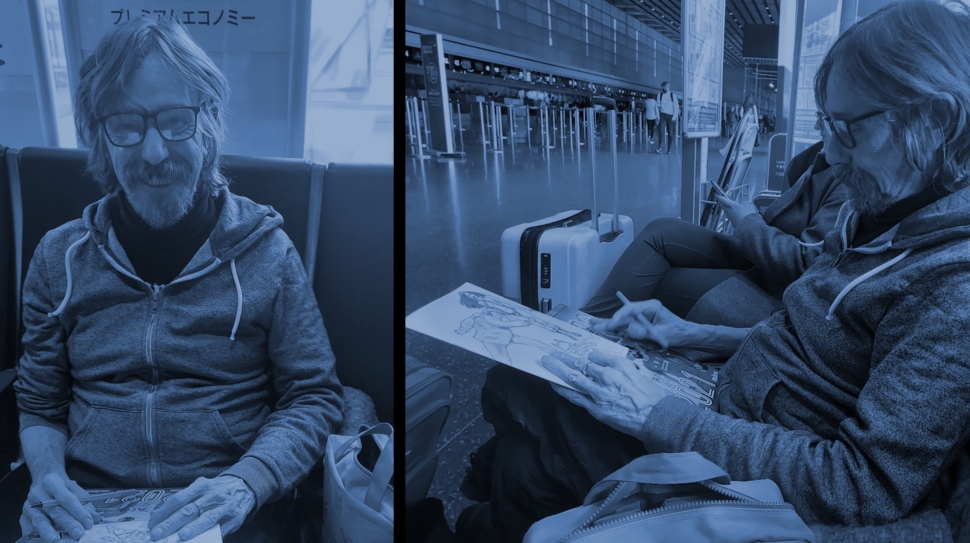Being introduced to Glenn Fabry is not exactly something that happens on a normal morning after breakfast.
Lead through the hotel lobby in search of an additional morning coffee to ease into the day’s hangover with gusto, I found myself plopped into a booth by my companion Simon Bisley, who tells me that the quiet, charming man sketching away in front of me is, in fact, Glenn Fabry, and that, if I want that interview, I really should just do it. Head pounding and still low-key eyeing the bar to see if, God willing, there is a coffee machine, I set things up so that we will chat in the bar after the show is over at the end of the weekend, and we all carry on chatting away, prepping for another weekend at another hotel, but this time for Wicked Comic Con in Boston Massachusetts — to this day, for this nerd’s money, one of the finest conventions if you’re done with the faff and celebrity and garbage and just want to see some fucking cool comics stuff.
But I digress.
I had spent a week preparing to talk to Fabry prior to flying out to Boston, lamenting the fact that I felt entirely ill-prepared to talk to one of the finest comic artists — indeed, finest fine artists working in comics — in the industry. But after the shaky, dehydrated morning chattering away with Simon, Glenn, and Glenn’s delightful girlfriend Karen — not to mention the days of shared drinks and gut-wrenchingly funny stories that followed in the evening ahead — it felt as if that prep was unnecessary, because Glenn Fabry was — and still is — just a good-natured, creative punk at heart.
The following is the interview conducted in the bar of a Hilton on a Sunday night after Wicked Comic Con Boston.
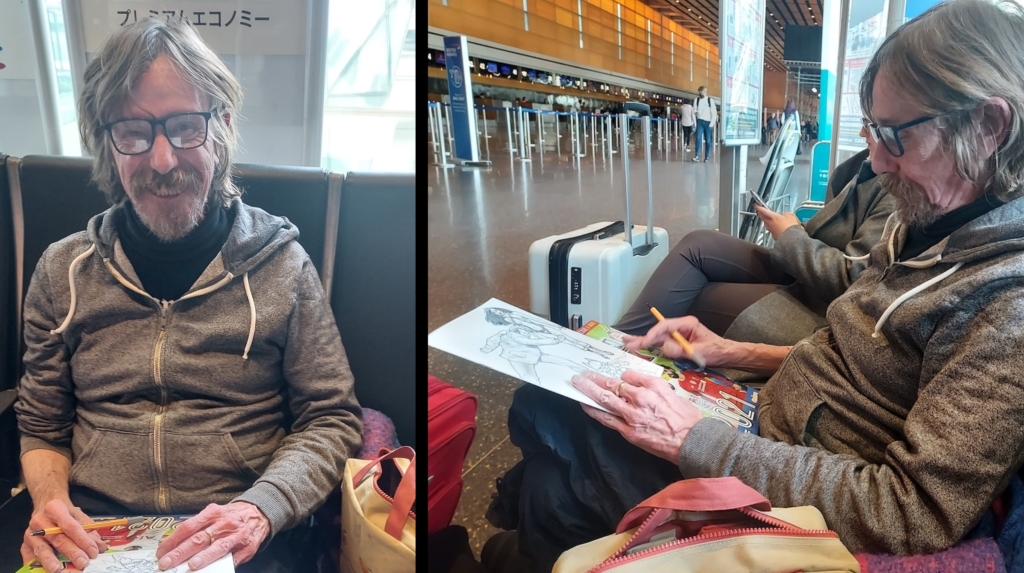
Welp. It’s done! How do things like this show compare to when you first started doing them?
Well, the very first one I did was in… I think, London. They’d given me a little badge with my name on it and this kind of stuff. I walked in through the door, and immediately, I was surrounded by people who wanted my autograph. It was just so fucking odd.
That’s not intimidating at all. [laughs]
No. It’s just like, “What are you asking that for?” So just signing bits of paper that people came up with and things like that. Yeah. Basically, I was a guy who worked on the four-four in a garage in Shepperton High Street. So going up to a show in London and then being surrounded by loads of people who knew who I was and wanted me to sign my name on things. It was just like, “What?” No, it was really peculiar; something I was used to at all. The other thing about it back in those days was my dad always used to tell me, “There’s no such thing as a free meal or a free drink.”
And then you learned that that is actually bullshit.
Right! Before I knew it, everybody was buying me free drinks. Thanks a lot, Dad [laughs]. But really, if you just go along to these shows, people say, “Oh, do you want something to drink, Glenn?”and I go, “Yeah,” and get plastered generally speaking.
I feel like that is a time-honored British comics tradition at this point.
Yeah. Well, if not, it should be. When American people came over, they were all being pretty professional. Sort of everything was about Disney, and they were kind of headhunting a certain group of people. You got blokes like Brian Bolland, who ended up doing Camelot 3000 or whatever — that was a hit. Then The Killing Joke — even more of a massive one. Brian did extremely well for himself…but Brian is just sort of a gentleman.
The more buttoned-up version of the British comics alums?
Yeah [laughs] But whenever the Americans showed up to see me, I was always drunk off my face. So they thought, “I’m never going to hire him to do anything. Never at all.”
But then you mopped the damn floor when you got into the American scene! So joke’s on them.
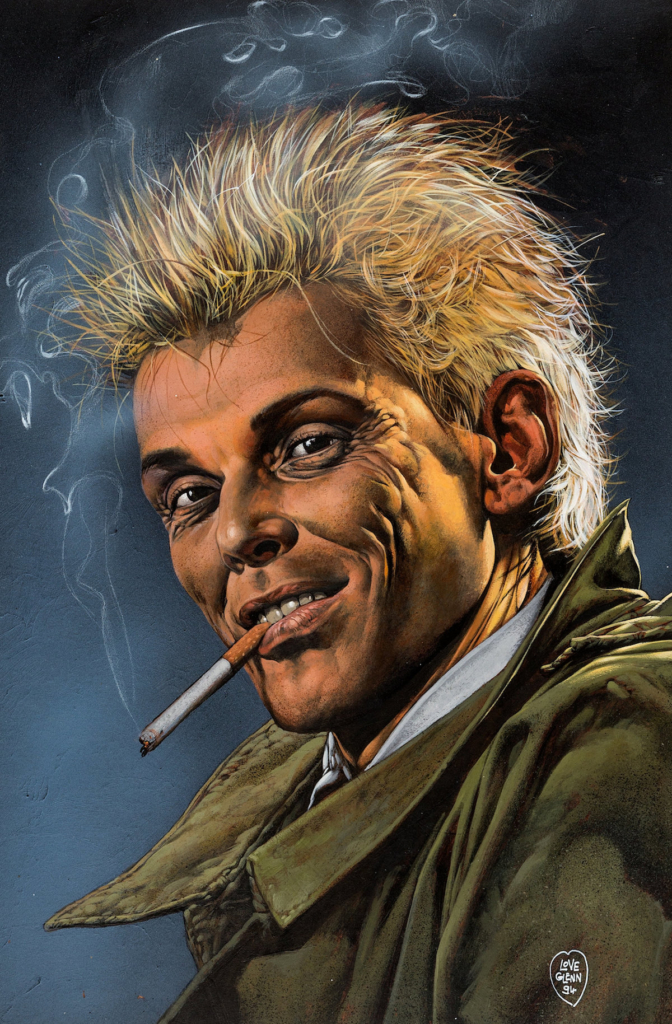
Well, what happened was that it was all basically down to Garth Ennis. I’m going to say thank you very much to Garth because he was writing Hellblazer at the time with Will Simpson, before Steve Gillett. Will “Game of Thrones” Simpson, as I call him now. God, I’ve known Will for 38 years now, easily. Maybe even more.
That’s definitely not nothing. Nearly four decades is a hell of a long time.
Yes, and Will was doing the interiors for Hellblazer. Yeah — Will “Game of Thrones” Simpson — he worked on the TV series Game of Thrones, which you may or may not have heard of. [laughs] Yeah. The guy doing the covers at the time, though, Garth couldn’t stand him. He really —
[A pause in the chat as a barkeep finally approaches us and we’re able to order the drinks that I promised Glenn in return for our chat. All is well in the world.]
Right, settled. Where were we?
Excellent. Yeah. So [Garth] couldn’t stand the cover artist who was… I mean, art is art. It’s all subjective, but Garth didn’t like it. And I’d done some work with Garth. I’d done a couple of things with him for Crisis, and we’d sort of met up and gone out for a few drinks with him and John McCrea and all that kind of stuff. I’d flown over to Belfast and hung around in his house. It was kind of like we were quite matey really. So Garth said, “Well, do you know Glenn Fabry?” He went up to Karen Berger and he said, “I don’t like this cover artist. You should use Glenn Fabry.” And Karen Berger said, “Glenn Fabry is a terrible drunk! You can’t use Glenn Fabry! He won’t be able to get anything done on time! He’ll be just pissed out of his head and rolling around on the floor vomiting!”
And then you said “Watch me” and accomplished some truly stunning art while rolling around on the floor vomiting.
Exactly. So Garth really actually campaigned.
That’s actually really lovely. Garth is good people.
He lasted about four-ish years of this guy’s covers, and eventually, she said to me, “Oh, everybody gets one chance. Only one. If there’s any trouble from you whatsoever, you’ll never work in this industry again.” My first cover for Hellblazer came out, and it was really popular. It did actually pretty well. I ended up doing covers for American magazines for about 10 years straight. I still do some every now and again, but not on such a regular basis. Yeah, and so the stuff came out for Vertigo, and then people from Marvel saw them. Yeah, I was doing quite well, quite well, I’d say. Although, I was an idiot for selling the originals at real dirt cheap prices.
Really? How cheap we talking here? Am I going to wince?
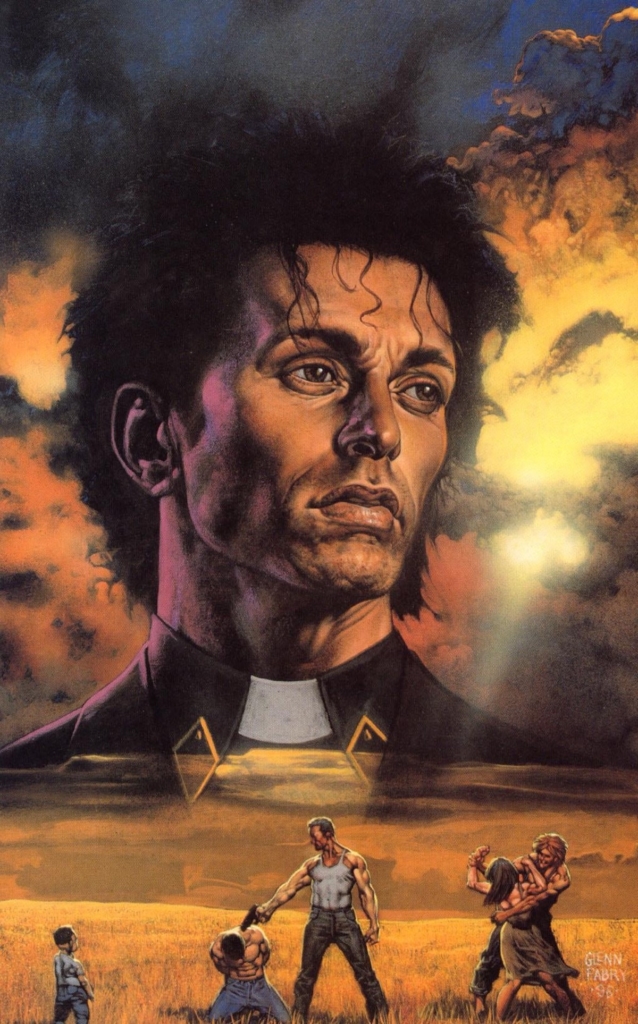
Well, the last time anybody sold one of my… I think it was a cover for one of the Preacher specials or something like that. It went for about 18k. At the time, I was selling it for 500 quid. So what happened with that was there was this letters page where Garth used to respond to everybody, and —
[Another break in the chat as our drinks have arrived.]
[Speaking into my recorder] A drink has just arrived.
The interview truly begins.
Exactly. Cheers.
Bad luck to cheers with water, but cheers, man.
Is it bad luck?
Supposedly! I don’t think my liver will forgive me for getting rat-assed three nights in a row with you lot [laughs]
We’ll find out!
[laughs] We’ll find out!
Anyway! Somebody said something nice about the covers, and Garth said, “All of these are for sale. If you want to get in contact with editorial, we can put you in contact with Glenn,” because I was always complaining to him about having bugger-all money. [Into the recorder] Still to this day, I have bugger- all money.
This letter came in from this guy who said he wanted to pop around and have a look around my studio. It arrived from the editorial thing. I said, “Yeah, right. Just going to be working. Come on over and have a look around.”
I was waiting for him to show up, and this car pulled up just outside my house. It was like the fucking Batmobile. It was a massive, great, big kind of black thing with all these dials all over it! It just looked really seriously like something from The Dark Knight Returns! Then the door opens, and this bloke comes out, and he looks like one of the Mitchell brothers from EastEnders.
[laughs] Really?
Yes, and I sort of walk him around my studio. He buys…I think it was about two and a half grand worth of my artwork straight off the bat. I said, “Whoa. Thank you, mate. I can afford to buy you a pub lunch if you care to go to the Spanish Lady down the bottom of the road in Saltdean.” He said, “Yeah, yeah. Sure. Okay.” So we’re up there. We’re having a couple of drinks. And I said, “If you don’t mind me asking you, what do you do for a living?” “I do nothing. I’m retired. I retired five years ago when I was 36.”
Good lord! I mean…as you do, I guess? What the hell?
“Well, have you inherited something?” He seemed pretty well off because all the money was in his wallet.
Did he have like, the cartoonishly thick gangster wad of cash thing going on?
Yes! A wad. A big wad he’s waving about. Yeah, he said, “Well, basically, I work for a company. It’s all to do with how to run your business successfully using computers. What I’ve got is I’ve got a cassette, an audio cassette that will cost you 10,000 pounds, and I’ve got a book that will cost you 20,000 pounds. I’ve got a compact disc that will cost you 80,000 pounds.” “Fucking hell, did you sell them anything?” “Yeah, I sold them all.” At the time, he was worth 85 million quid, and he was a big fan of comics, massive fan.
I think we’re all in the wrong profession, Glenn.
We really are. And well, he bought himself a house in the Cayman Islands. He invited me and Nicki, my first wife, and our baby Tom — he was a baby at the time, he’s 26 now — over to spend a weekend in the Cayman Islands. So we’re in his house, and he was talking about how he had an underground area where he kept all the original artwork he’d been getting.
…like a James Bond villain?
I was expecting it was going to be something out of James Bond as well! Like a tunnel. But, no, it’s a little tiny elevator, and you go down there. This thing was, well, about the size of a child’s bedroom. It had this massive, great, big filing cabinet in it, and inside the filing cabinet was just tons and tons of Alex Ross’ work and all the paintings he’d bought from me, and he had some original Frank Frazetta, which he bought at auction. I saw one of his Frank Frazetta paintings. He paid a million dollars for it.
You know, just casual cash.
Yeah, just casual. Loads of Jack Kirby. He really liked Jack Kirby’s stuff. Yeah, just tons, and tons, and tons of artwork, and also, he said, “Oh, if you fancy going scuba diving, I own the beach.” He owned the beach and about another 100 yards worth of water.
Totally normal, average things that everybody understands.
Well, the only problem with the Cayman Islands is practically every year there’s a massive tornado and all the buildings are blown down. But yes, it was an exercise in seeing just where those kinds of things go.
Well, going back to crediting Garth so much with taking off in America…you seem to genuinely enjoy collaborating with people. It seems like you’ve kind of got a jam band going of people that you consistently work with.
Yeah, the only thing that I ever wrote and drew myself was a character called Bricktop.
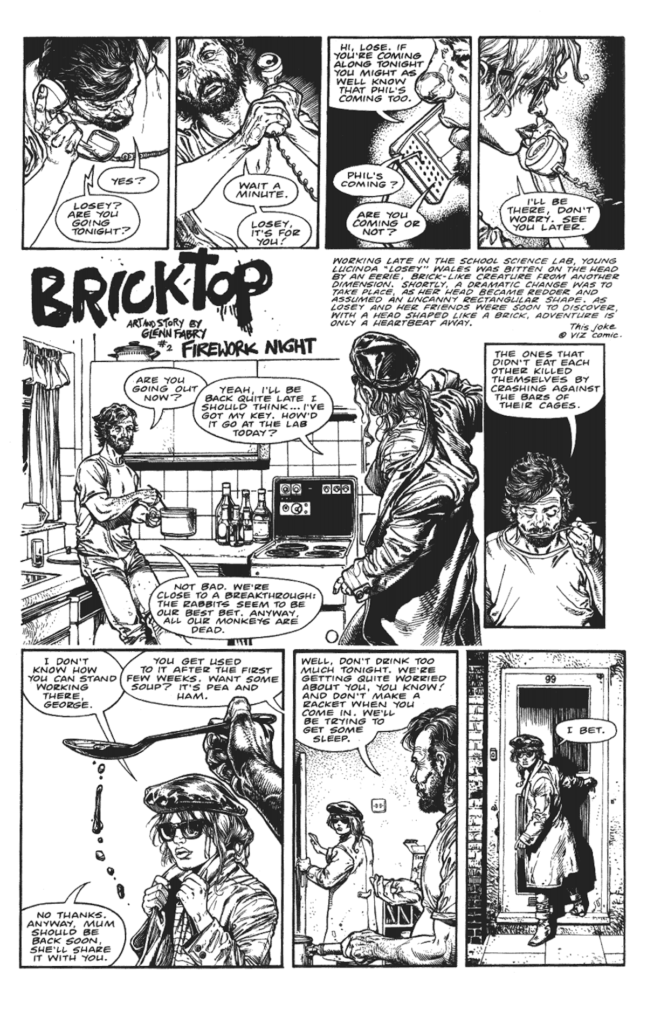
Oh! Yeah, the stuff in A1! I’m a massive fan of that entire anthology.
I quite enjoyed doing that. I quite enjoyed doing this writing, and I worked out this story really intricately. So at any point, it all twists and turns. It all makes sense in the end. Then what happened was after the first episode came out… Yeah, I think it was Garry Leech — who is unfortunately no longer with us — who basically said, “Well, Glenn, the only problem with this is that A1 comes out every few months.”
Yeah it was quarterly I believe. Or something close to that. The schedule was kind of fucked.
Yeah, that’s right. “So nobody’s going to remember your storyline.”
When you sit down and read it all in a oner though, it’s incredibly good stuff.
Yeah, it does work in the end, doesn’t it?
It does!
He comes back on episode three of Bricktop, and he says, “Now, we want you to go back to the original story now.” So I had to just rework everything. Yeah. Well, no, the very first professional printing job, or rather the first professional illustration job that I had in comics, was with the punk rock band, The Stranglers.
Really?
I developed a character called Jack in Black who’s the world’s biggest Stranglers fan. They used to have a monthly fan club magazine called Strangled, and Jack in Black appeared in it for years. They used to invite me to their rockstar parties in London. We used to hang out with Jean-Jacques Burnel.
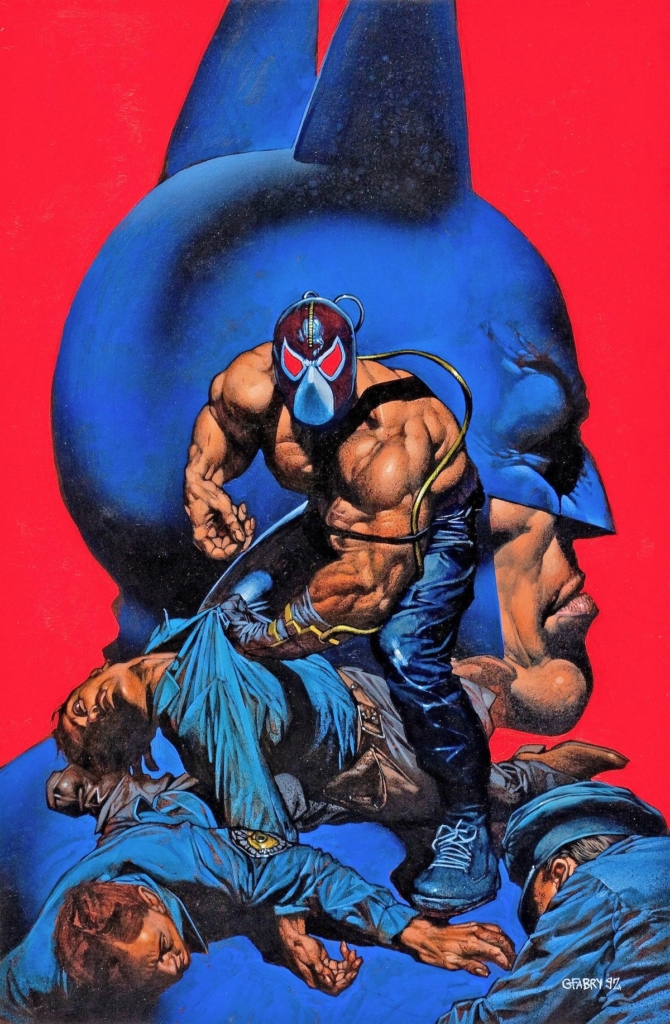
I really should have recorded the other day when we were just chatting because this really ties in with just how many wild stories you have of having met just this laundry list of incredible people. How did you manage to stumble into so many of those sorts of things?
Well… I was born in London. And when I was about two, my mum, and my dad, and my older brother, we moved to a place called Shepperton. The only really spectacular thing about Shepperton is it’s got the film studios there — Shepperton Film Studios. I had this job when I was 16— my only other job apart from I was a paperboy once when I was really little — where I was working on the four-four in the Shepperton Motor Company.
I went to art college when I was 17, but I had to keep on working in the garage because I couldn’t get any money off of the council for going to art college because Shepperton was kind of in a place called Middlesex, which is a tiny little county. It’s a really, kind of really, really tiny place. So I had to basically pay my way through college, but you’d be working behind the till in Shepperton Motor Company. Mel Gibson would come in and go, “Can you direct me to Shepperton Film Studios?” And you’d give Mel Gibson the address. Two weeks before he died, I directed Keith Moon of The Who to Shepperton Film Studios, and that was like… I was behind the till, and this massive Rolls-Royce thing came up, and Keith Moon of The Who came in. He’s got these two women with him — and they’re really good-looking women — and they’re wearing fur coats and nothing else.
Spectacular.
Yeah exactly. And he goes, “I don’t suppose you know how to get to Shepperton Film Studios, do you?” And I was about to say, “Oh, I’ll get in the car with you!”
“Oh man it’s really hard to find I have to get in the car and go with you” [laughs]
Right [laughs] But I didn’t say that. But I should have! No, I didn’t in the end. So there was lots of stuff like that. There was a period — not so much these days, I hope — when sort of weird shit just continued happening. As an artist, I was a big fan of Terry Gilliam, the cartoonist from Monty Python. This is before I’d heard of the invention of an airbrush because he used to do loads of sketches in airbrush, and I used to think it’s the most fantastic painting ever, all that sort of manipulation of tone and this kind of thing.
One day, I came back from school, and in the kitchen, there was this picture saying, “To Glenn. Love Monty Python.” And it’s like this drawing by Terry Gilliam. It’s signed by Terry Gilliam. It’s done in a magic marker or something like that, but it was obviously one of his drawings hanging on the wall at my mum’s place. Anyway, I was saying to my mum, “Where’d you get this photo? Where’d that come from? It just magically appeared on the table.” She said, “Oh, the manager of the…” because she ended up working at the garage, and my brother ended up working at the garage, and I ended up working at the garage. The manager at the garage at the time, this guy called Derrick Berryman, and Derrick Berryman was Terry Gilliam’s brother-in-law. So when my mum said to Derrick, “Oh, he’s a big fan of Terry Gilliam I immediately I brought all the best drawings I’d done, put them in plastic wrap, and took them to Derrick, and said, “Oh, next time you see Terry Gilliam, can you take him my drawing?” He went, “Oh, yeah. Sure.” About, I don’t know, a couple of months later, Derrick came around the house, my mum’s house, and said, “Oh, well, Terry Gilliam’s making a film in Shepperton Film Studios. Do you want to come in for the day and watch him making Jabberwocky,” which is another film. Yeah, I did.
How fucking cool is that?!
Yeah, it’s fantastic. I met all these movie stars. It wasn’t particularly fun, but it was a great day, and Terry Gilliam was really, really nice. He was making a movie and all of this kind of thing. Yeah. Well, I’d been living in Shepperton all my life, but it’s the first time I actually went through the gate. It was a bit like entering Willy Wonka’s Chocolate Factory sort of thing.
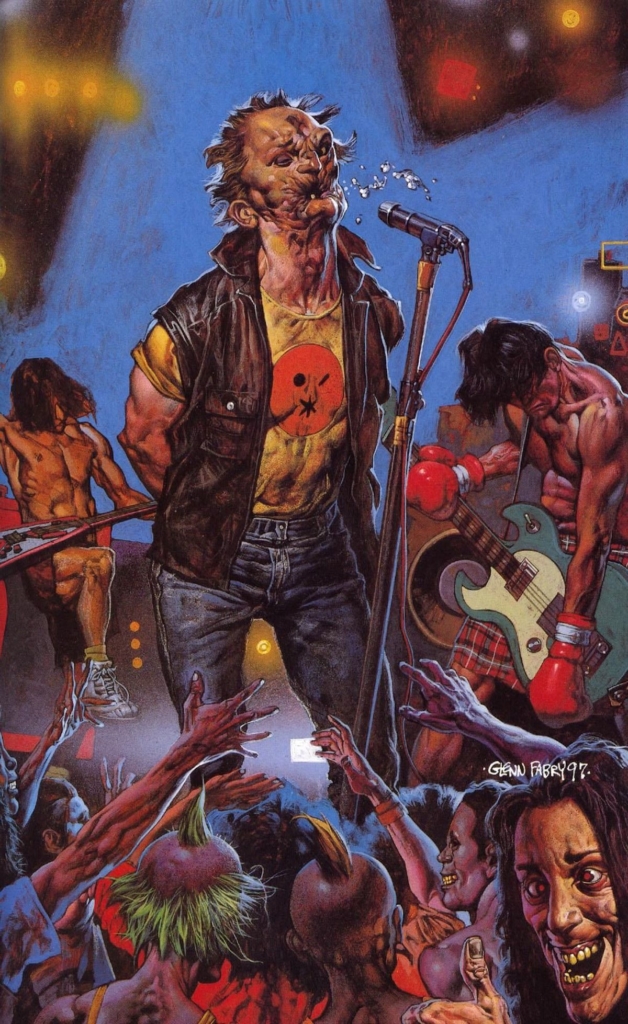
So what about you and the punk scene then? I know there’s some involvement there as well.
Oh well yes. I was punk back in the day. When I was at art college, I decided that… well, you had to take a picture every year to get your plastic card. I thought that every year, I’d do a completely different look. I used to dye my hair all sorts of different colors, and I used to use makeup sometimes.
Did you do the eyeliner and everything?
Oh, God. Yeah, and my mascara. Yes, I did all of that. There was a point where I used to make my own clothes as well. I’d go around to charity shops, buying loads of old clothes, and stitch them all together.
A proper DIY job.
Yeah, exactly. Used to do all that because my mum used to be a seamstress. Yeah, so she taught me how to sew when I was little.
The gift many mothers gave the British punk scene: knowing how to do a decent stitch.
Oh, absolutely. But I went to Twickenham College of Art in Richmond — or Richmond College of Art in Twickenham — or whatever way they called it, and yeah. It was the proper punk mob. For example, have you ever seen the film American Werewolf in London?
Of course!
You know that bit when they’re in the train, and there are all these guys with mohawks and stuff like that? And David Naughton is kind of pulling stupid faces beyond them? They were at my school. They were the year above me, those guys.
HA!
I used to go in there, and there was this guy— he had a mohawk haircut, but it went all around his head.
…like a saucer?
Yeah. Just a big sombrero of hair. I think he even put superglue in it to make the bits point out. Same guy who had a real dead rat as an earring.
An actual dead rat?! That’s hardcore as fuck.
It was! Now, there was also one of the guys there — I used to speak to all these people in the canteen at lunch break — and there was one guy who was a massive fan of Adam and the Ants back when Adam and the Ants wore S&M and black leather.
Back when they, too, were doing the “we’re hardcore and groovy; long live Vivienne Westwood” thing
Yeah, but when “Antmusic” came out, he was feeling pretty skeptical. But oh God, after “Prince Charming”, he just — Look, he had this Adam and the Ants tattoo on his shoulder, and after “Prince Charming ” he came in and he grated it off with a cheese grater. Just ribbons of tattooed skin.
[laughs] Holy shit. That’s gruesome! I mean that’s some real dedication to the disdain.
Yes! And we used to go to all these parties and things back when I was an art student and we tried all sorts of dangerous drugs and so forth. I was young, so I can’t be blamed. I don’t do any of that stuff anymore, of course. But I used to go to parties up in Walton-on-Thames, which is next door to Shepperton. You can walk there. But Jimmy Pursey of Sham 69 would do these parties. He’d get completely drunk or high or whatever and go and hide in the wardrobe. He’d say, “No fighting. No fighting,”
Was this around the period where they started getting the massive skinhead following, by any chance? [laughs]
Yes, and he hated skinheads. He was all right with them when the skinheads were—
When they became more groovy and anti-racist?
Yeah, before being taken over by racist nasty bastards. That lot. Skinheads were pretty cool when it became more about that. That’s where we get things like ska from, of course.
Like I said: the groovy anti-racist stuff!
Oh I love The Beat. And The Specials.
I made the mistake of going to see The Beat live 15 years ago, and it was kind of grim. I imagine trying to make that kind of music now and after all these years is rough but many they looked tired.
Aren’t they calling themselves The English Beat?
Yup. In America, they are The English Beat.
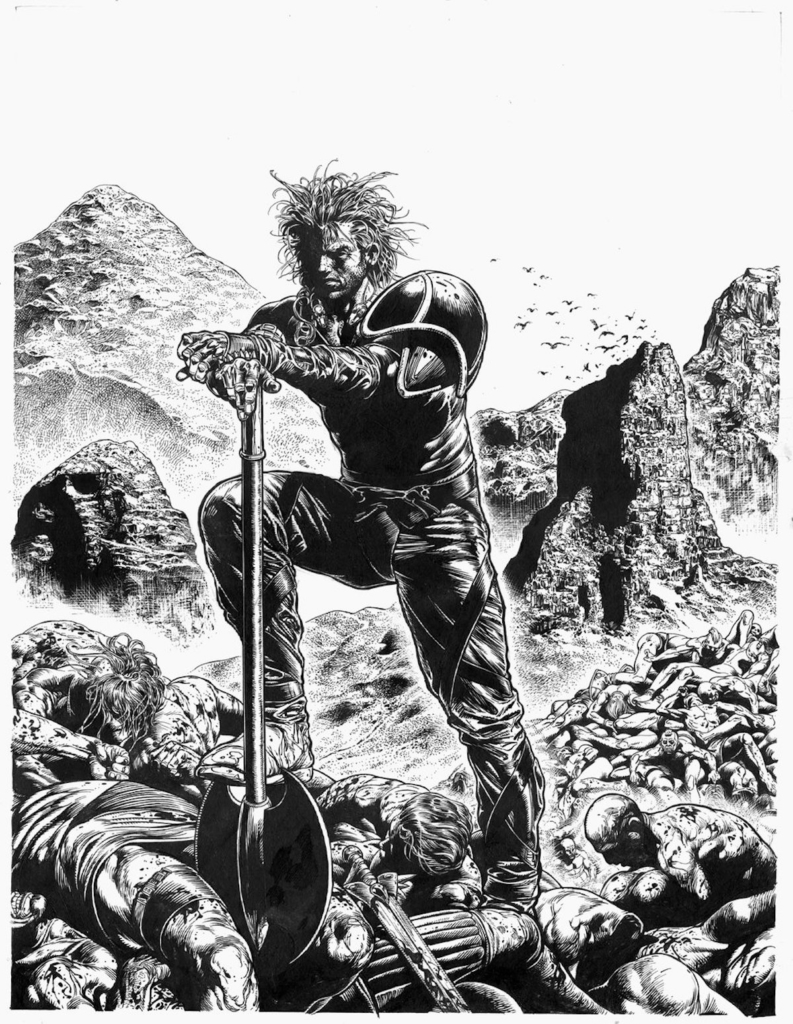
I used to go to all those bands when they were knocking about like Siouxsie and the Banshees and people like that. I pretty much saw all of them. All the ones that I really wanted to see, at some point or another, I got to see them. The first gig I ever went to, I had a friend of mine — he was the same age as me, in the same class at school, this guy called Nick Gerrod — he became an entrepreneur and ended up being a manager of a band called The Meteors.
Oh wow!
Yeah. Obviously, he’s my age, but he just said, “I’m leaving school early.” He enjoyed drawing and I used to draw a lot, obviously. So we got friendly because of drawing basically. He said, “I’m going to see this band tonight. Do you fancy coming along?” I said, “All right.” Turns out it was Dr. Feelgood. I was about 16, and they were performing in a pub. It was illegal for 16-year-olds to be drinking in pubs, but we got away with it and started drinking.
Life finds a way.
I really, really enjoyed it. They started playing and then Wilko— Wilko Johnson — comes out. He was a terrifying looking individual. He’s like eight foot tall, this really strange, mad face. And he was playing his guitar and doing the duck walk and all that. It was just fantastic. It was really great. We danced all the way through the night, and ended up covered in sweat.
As you tend to do with those kinds of gigs. Just doused in sweat and strangers’ fluids [laughs]
Yeah, all sorts of different fluids going on there. [laughs] Obviously, you catch a terrible cold if you’re in England.
So with this punk rock rebellious streak you had…where does that come in with how you create art? How you work is so incredibly refined and crisp and that seems almost in opposition of the ethos you’ve been creating under for years. Explain that dichotomy to me.
Well, I went to art college because I was quite good at art and English, and I got all of the necessary O-levels, and A-levels, and those kind of student qualifications. I went into art college a year earlier than most people. The first thing the teacher said to me when he saw my portfolio was, “Don’t you realize that the invention of camera has made representational drawing completely redundant? What you need to do is be more abstract! More modern art!” But I wasn’t interested in that. I was into all this representational artwork. I loved doing cartoons and all this kind of thing. Most of my favorite artists were from comic books, the ones we used to pick up from the newsagents before the days of Forbidden Planet. They ended up selling Spiderman and Howard the Duck. I was a massive fan of Howard the Duck.
As soon as I found out about Forbidden Planet up in London — because Shepperton is… They’re a long way away from London. It’s about 45 minutes on the train. My dad did it every morning because he worked up in London — but I used to pop in there every time I saved up enough money from working at the garage. The first time I ever saw Moebius in Métal Hurlant and things like that, it was like, “Oh, what the fuck is it? Love it. I love it.” And so I’d buy a couple of copies of Howard the Duck and pick up art books and Heavy Metal and things like that and bring them back.
So when this teacher at art college was saying, “All this stuff is redundant” — well I was expecting art college to be like Hogwarts. All they did was basically tell me that my stuff was redundant and-
I’ve heard that from a lot of different artists actually.
Well, right. Exactly the same thing happened to Ryan Brown, a very good Irish artist who does most of his stuff on the computer. The only other good thing about Richmond Art College apart from the punk rock and the rock concerts is that it had a really great library. All the techniques and everything that I learned, I learned from books in the public library.
More so than you did in the actual classes with teachers?
Oh yes. Well, except maybe life drawing. Life drawing was really good. We did lots of life drawing. I enjoyed that. Yeah, and just that kind of stuff. Other than that…apart from going to loads of parties, and dressing up as a punk, and going to the college, and drinking a lot — well that was what being an artist student was really about for me.
Seemed to have fueled the fire enough.
Oh it did all right.
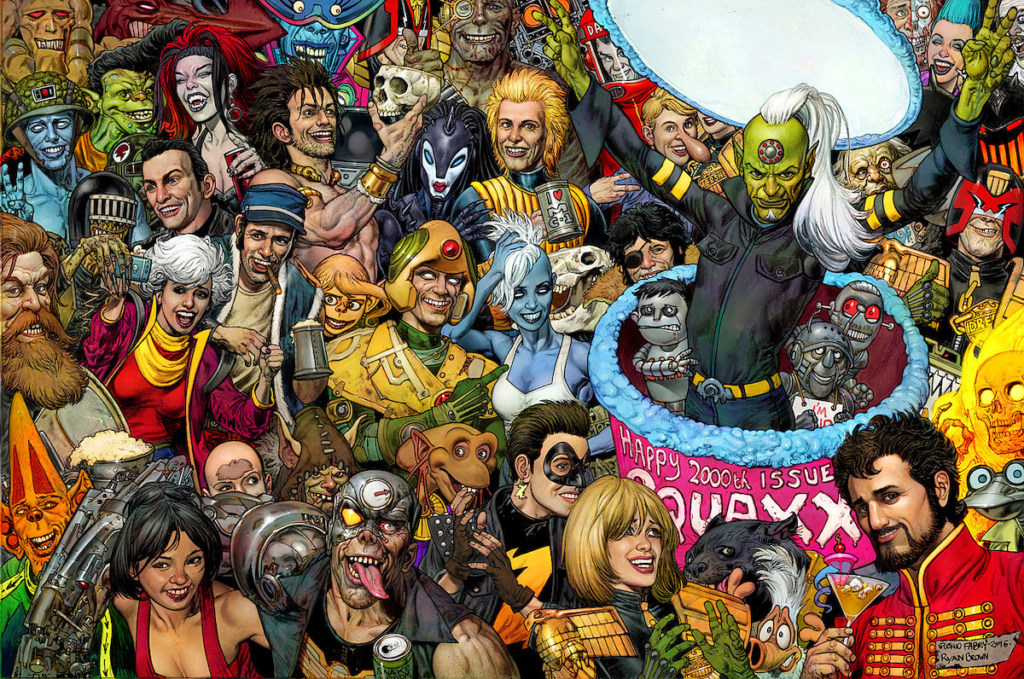
You primarily work traditionally. Have you started doing anything digital?
No, not really. Karen, my beloved, is teaching herself how to do computer colors because the idea was that I’ll do the black and whites, and she’d color them in, and we’d work as a team.
Right! I saw some of Karen’s stuff earlier at breakfast. It really is lovely.
Yes it is. But that didn’t work. We ended up just arguing with each other all the time. Said, “No, I didn’t want you to do it like that.” “What do you mean? This is the way I want to do,” and all that kind of nonsense. We do a couple of artistic things every now and again together, but a long project like a comic book… oof. She’s done a couple of covers and things like that; computer-colored old Darick from The Boys and a couple of things. We’re doing 2000 AD. It’s all good.
Okay well let’s go less personal and more broad on that then — what do you think about digital being the new format? It’s not entirely ridiculous to say that we just don’t see as many traditional artists as we used to.
No, you really don’t. I don’t know whether or not that’s going to be a help in my career or whether or not I’m going to be redundant once again. And now they got this AI stuff, which is that they’re using old artwork to create some new stuff.
It’s like an amalgamation of things, yeah.
It’s quite interesting seeing all the stuff about how making movies these days, you’re not going to need to hire a scenery background even. You’re just going to press a couple of buttons in the computer, and there you go. It’s all sorted out. It’s hard. But! Somebody showed me an AI version of my style, and it was shit. That cheered me up.
Simon [Bisley] said the same thing about his! Did the person have eight fingers and stuff like that?
It’s like one of the eyes was slightly higher than the other. But basically a lot of my covers have been headshot with shoulders, and things like that, and one hand doing something, holding a fag or whatever. This is like that with this bloke who looked like Uncle Sam, the well-known character from American posters.
Well, I mean, if it looks terrible, then you at least know people can’t say, “This is a Glenn Fabry thing, and I’m going to sell it for more than you’re able to fetch for whatever you’re doing.” Cause that’s the worry, isn’t it? Is that so many of the AI projects are going to make the traditional redundant. But nobody’s ever going to be able to do it like you do the original.
Well, no, it takes ages to be able to be quite good at it. Takes loads and loads of practice and all sorts of things. Well, you know from Simon, don’t you? Loads of references and practice and knowledge of anatomy and whatnot.
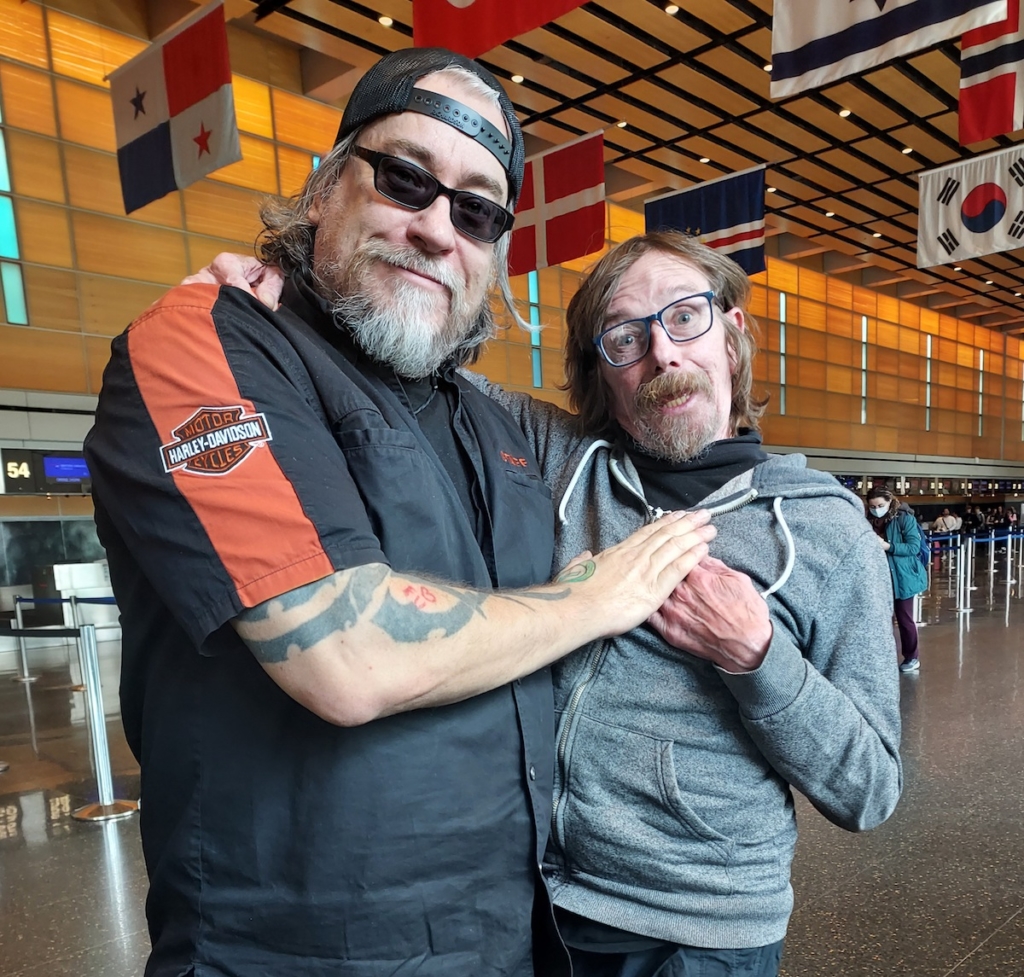
Yeah. I’ve been talking with him about it too. Part of what keeps coming up is that it’s hard to think about in the grand scale because every artist draws from every other influence that they’ve had. So without the emotional aspect involved, how is AI different from that basically?
I suppose that’s right, really. First time I saw Jack Davis artwork from MAD Magazine, I wanted to draw exactly like Jack Davis, but I didn’t want to copy any of his drawings. What I wanted to do was copy his style — a bit like an AI thing, I suppose, come to think of it. I was trying to copy Jack Davis’s style. Then I saw Gil Payne artwork, and I was like, “Ooh, I love that as well. Yes, I’ll try and draw like Gil Payne.” I ended up with a style that is halfway between Jack Davis and Gil Payne. Then I found Moebius and then all of that went into a great big art stew. So the style I’ve got at the moment is more or less a collection of being bad at being Gil Payne, Jack Davis, Moebius, Richard Corben.
You have the perfect amount of all of them to create something entirely new.
Yeah, indeed. Deep in my subconscious brain.
I know I’ve kept you here for ages and despite the beer I’m sure you’d like to carry on with the night. So just for kicks, what are you working on right now?
Oh I have a plug? Excellent. There’s a book called The Temple, which is written by the actor Luke Arnold who plays Long John Silver in Black Sails television program. He’s decided he was going to have a go at doing a bit of writing, so he’s written this book called The Temple. I think the general idea of it is a bit like the Mute work I did for Duncan Jones. Duncan got in contact with me through SFX magazine, and Duncan is [Glenn does his very best Bowie impression] the son of David Bowie. My David Bowie impression, terrible, I know.
Bless. You tried.
[laughs] I try, I try. Anyway, in the interview he did with SFX magazine, he was saying, “What are you doing at the moment?” Because Source Code had just come out starring Jake Gyllenhaal. And the SFX fellow was going, “What’s your next project?” And Duncan is going, “I’m going to have a go at doing some graphic novels.” “Oh, graphic novel? Really? Any ideas of the artist you’d like?” In SFX, Duncan goes, “Well, I’d like somebody like Glenn Fabry.” And I, reading this, start thinking, “Hang on a minute. I’m quite like Glenn Fabry.”
“I believe I’m more like Glenn Fabry than most people” [laughs]
So I had to try and find a way to get in contact with him and got in contact with SFX magazine. I was under the impression that, like in comics, everybody has met everybody else in comics at some point. I thought all actors, and film directors, and things like that were along the same lines and bump into each other at RADA or something. But I finally got in contact with him. We did about 45 pages of this new kind of comic book and it did end up being made into a movie, which you can see on Netflix. I designed the opening sequence with the giant dolphins. I designed all of the scenes in the restaurant, and driving around, done bits and pieces, and all the homosexual robots are my design as well. I’m the go-to guy for homosexual robots.
And I think that’s the perfect place to end. Glenn Fabry is the guy for homosexual robots.
Too right.
